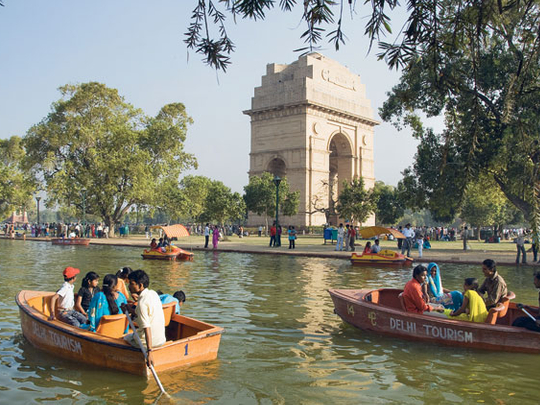
The highway leading out of Delhi is lined with adverts for new housing developments with names such as “Exotica Dreamville”. A typical hoarding shows a smiling young couple, standing on a manicured lawn, under the slogan: “Lifestyle is here.”
Keep driving, however, deep into the neighbouring state of Uttar Pradesh, and you will find lifestyles that are neither exotic nor the stuff of dreams. On the outskirts of the city of Budaun, many of the children show signs of malnourishment. Goats, buffalo, cows and camels roam the filthy streets. Unicef, the UN agency for children, is running a campaign to equip all the houses in the district with a modern toilet. It is also trying to find new work for the “manual scavengers”, who make their living by cleaning dry latrines by hand.
In Budaun itself, the sanitation project is making slow but steady progress. But for Uttar Pradesh — whose population is more than 200 million, larger than that of Brazil — the task is still dauntingly big. Unicef estimates that only 21 per cent of the state’s inhabitants have access to a proper toilet. In India as a whole about 600 million people — out of a total population of 1.2 billion — still practice “open defecation”, either in fields or urban wasteland.
India’s sanitation problems are a public health disaster that helps explain other grim statistics. Last year, according to Unicef, 1.7 million children under the age of five died in India — just under a quarter of the worldwide total — while 42 per cent of the country’s children are officially categorised as underweight. Although India is often bracketed with China as a rising superpower, it is a significantly poorer nation — with a per capita income less than a third of the Chinese level.
Statistics such as these are sometimes used to pour scorn on the idea that India is an emerging great power. The truth, of course, is more complicated. After 20 years of strong economic growth, India is simultaneously a rich and a poor country. Its sheer size means that India is the 10th largest economy in the world — and it could well be the third-largest by 2030.
The country’s consumer market is growing rapidly. It now has more mobile phones than toilets. India has more absolutely poor people than Africa, and more billionaires than Britain. It is magnet both for the world’s aid agencies and for its multinationals. Corporate India is so wealthy that it is going on an international buying spree — snapping up well-known western marques such as Jaguar Land Rover. A country that almost ran out of money during the economic crisis of 1991 now has foreign reserves that stand at a healthy $300 billion (Dh1.101 trillion). India has nuclear weapons and a space programme; it recently announced a plan for a mission to Mars. It is now also the world’s largest importer of weapons, and recently said it would spend $10 billion buying new fighter jets from France.
Some regard all these contrasts as evidence that the Indian government has scandalously misplaced priorities. The reality is less clear-cut. The central government has a great many poverty alleviation programmes and spends a lot of money. The story is not so much one of outright government neglect as one of corruption, maladministration and rigid social structures. A decade ago the central government allocated about $300 million to improve sanitation in Uttar Pradesh alone — but the money somehow disappeared between Delhi and places such as Budaun. Local residents tell stories of the small tragedies that blight lives and thwart official policy — such as government ration cards that are stolen by local officials.
Yet the numbers suggest that, even in rural areas, things are improving. Rural wages are said to have doubled over the past decade in India. Amid all the poverty in Budaun, there is plenty of commerce —from small workshops to roadside stalls. People are moving off the farms into rural industries or towards the cities.
It is this migration from rural to urban areas that brings together the stories of the two Indias. One senior official in Delhi says that his main reason for confidence about his country’s future is that the move to the cities will drive economic growth for the next 20-30 years, as it has in many societies in the past — from Britain in the 18th century to China today. “You stay sane in India by looking at the medium-term,” he remarks.
The fact that India is simultaneously a rich and a poor country is not just baffling for Indians — it is also a puzzle for outsiders. In Britain at the moment, there is a lively debate about whether the UK should continue to send foreign aid to India. If the idea is to help the world’s poorest people, then there are more of them in India than in any other country in the world. And yet India also has a smaller budget deficit and larger foreign reserves than Britain.
Indians could have their own version of this debate about aid and equity. For even as European countries send aid to India, India will be indirectly funding the bailouts in the Eurozone — through its contributions to the International Monetary Fund. Yet living standards in Greece or Ireland remain unimaginably lavish by the standards of rural India.
These kinds of paradox crop up in debates about everything from arms sales to climate change. They are characteristics of a world in which notions of “rich” and “poor” nations are being turned upside down.
— Financial Times










